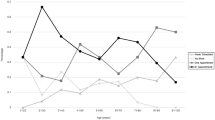Abstract
Purpose
The purpose of this clinical note is to (a) describe the development of an open-source data repository of videofluoroscopic evaluations of swallow studies (VFSS) from individuals across the lifespan with various feeding and swallowing disorders, and (b) to qualitatively assess the usefulness of a repository to engage students in research in swallowing disorders.
Method
This project was divided into two phases. Phase 1 focused on the development of the repository. This entailed identifying videos, removing private information, developing codes for swallow events and bolus variables, transcribing videos, and uploading them to a publicly available site for easy access. Phase 2 assessed the usefulness of the repository as a research tool. In this phase, a group of graduate and undergraduate students investigated a research question of interest to them. Each phase incorporated a qualitative analysis to examine the challenges encountered in that given phase.
Results
An open-source data repository of swallow studies, called DysphagiaBank, was successfully developed and uploaded into the TalkBank data repository. The database was easily employed by both graduate and undergraduates to engage in research in a timely fashion. Across qualitative analysis, the single consistent barrier to success was the COVID-19 pandemic that impacted access to campus and adequate internet for streaming.
Conclusion
The use of an open-source data repository improved our students abilities to engage in research and enhanced their understanding of swallow physiology across the lifespan.


Similar content being viewed by others
References
Minga J, Stockbridge MD, Durfee A, Johnson M. Clinical guidelines for eliciting discourse using the RHDBank Protocol. Am J Speech-Language Pathol. 2022;31(5):1949–62. https://doi.org/10.1044/2022_AJSLP-22-00097.
MacWhinney B, Snow C. The child Language Data Exchange System: an update. J Child Lang. 1990;17(2):457–72. https://doi.org/10.1017/S0305000900013866.
MacWhinney B, Fromm D, Forbes M, Holland A. AphasiaBank: methods for studying discourse. Aphasiology. 2011;25(11):1286–307. https://doi.org/10.1080/02687038.2011.589893.
MacWhinney B. Understanding spoken language through TalkBank. Behav Res Methods. 2019;51(4):1919–27. https://doi.org/10.3758/s13428-018-1174-9.
Bernstein Ratner N, MacWhinney B. Fluency Bank: a new resource for fluency research and practice. J Fluen Disord. 2018;56:69–80. https://doi.org/10.1016/j.jfludis.2018.03.002.
Azer SA, Kanugula AK, Kshirsagar RK. (2023, January 20). In: StatPearls [Internet]. Treasure Island (FL): StatPearls Publishing; 2023 Jan- Dysphagia. Retrieved April 5, 2023, from https://www.ncbi.nlm.nih.gov/books/NBK559174/.
Stadlinger B, Jepsen S, Chapple I, Sanz M, Terheyden H. Technology-enhanced learning: a role for video animation. Br Dent J. 2021;230(2):93–6. https://doi.org/10.1038/s41415-020-2588-1.
Plch L. Perception of technology-enhanced learning by medical students: an integrative review. Med Sci Educ. 2020;30(4):1707–20. https://doi.org/10.1007/s40670-020-01040-w.
MacWhinney B. (May 31, 2023). Tools for analyzing talk part 1: The chat transcription format - talkbank. https://talkbank.org/manuals/CHAT.pdf.
Rosenbek JC, Robbins JA, Roecker EB, Coyle JL, Wood JL. A penetration-aspiration scale. Dysphagia. 1996;11(2):93–8. https://doi.org/10.1007/BF00417897.
Martin-Harris B, Brodsky MB, Michel Y, Castell DO, Schleicher M, Sandidge J, Maxwell R, Blair J. MBS Measurement Tool for Swallow Impairment—MBSImp: establishing a standard. Dysphagia. 2008;23(4):392–405. https://doi.org/10.1007/s00455-008-9185-9.
Vose AK, Kesneck S, Sunday K, Plowman E, Humbert I. A survey of clinician decision making when identifying swallowing impairments and determining treatment. J Speech Lang Hear Res. 2018;61(11):2735–56. https://doi.org/10.1044/2018_JSLHR-S-17-0212.
Acknowledgements
The authors are thankful for the support from TIMS Medical which made this project possible. They also wish to acknowledge all the students in the UNM Swallow Disorders Lab who helped with development and engagement phases of this project, especially the efforts of Marie Ray, Leslie Ibuado, Olivia Zamorano-Pedregon, Samantha Morowski, Megan Friedman, and Mahshid Rashidi.
A subset of these data were presented at the New Mexico Speech and Hearing Convention in October 2022 and at the Dysphagia Research Society Annual Meeting in March 2023.
Funding
This study was partially funded by the Arts & Sciences Support for Undergraduate Research Experience (ASSURE) fellowship, funded by the University of New Mexico College of Arts and Sciences.
Author information
Authors and Affiliations
Corresponding author
Ethics declarations
Conflict of Interest
Author A declares that she has no conflicts. Author B declared that he has no conflicts. Author C is one of the original developers of the TalkBank repository. He did not receive any funding to support the addition of the swallow database into the TalkBank repository.
Ethical approval
No animals were used in this study.
Human data involved retrospective data that was collected for clinical purposes. All procedures performed in this study were in accordance with the ethical standards of the institutional and/or national research committee and with the 1964 Helsinki declaration and its later amendments or comparable ethical standards. Informed consent was waived.
Additional information
Publisher’s Note
Springer Nature remains neutral with regard to jurisdictional claims in published maps and institutional affiliations.
Rights and permissions
Springer Nature or its licensor (e.g. a society or other partner) holds exclusive rights to this article under a publishing agreement with the author(s) or other rightsholder(s); author self-archiving of the accepted manuscript version of this article is solely governed by the terms of such publishing agreement and applicable law.
About this article
Cite this article
Palmer, P.M., Padilla, A.H. & MacWhinney, B. The Development and Implementation of A Data Repository for Swallow Studies. Dysphagia (2023). https://doi.org/10.1007/s00455-023-10632-8
Received:
Accepted:
Published:
DOI: https://doi.org/10.1007/s00455-023-10632-8




